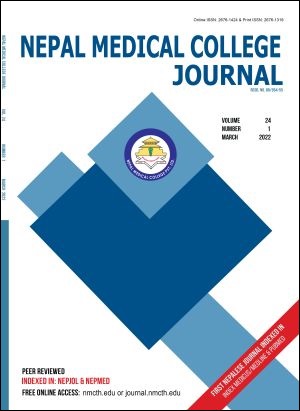The spectrum of sonographic findings in enteric fever cases of paediatrics age group in Gurugram region of Haryana, India
DOI:
https://doi.org/10.3126/nmcj.v24i1.44143Keywords:
Enteric fever, acalculus cholecystitis, MLN, USG, hemoculture, Widal testAbstract
There is always need for the earliest diagnosis of enteric fever to start the appropriate treatment for this life threatening illness. The diagnosis becomes difficult because of inherent limitation due to the long standing vague complaints. Some findings like acalculus cholecystitis, hepato-splenomegaly, enlarged mesenteric lymph nodes (MLN) and free fluid can easily be picked up by ultrasonography (USG). USG is easily available, without any ionizing radiation, non-invasive and economical. Hemoculture and Widal tests are time consuming and the cost is quite high. The study was conducted with 100 paediatric patients aged 1-year to 15-year. All were having enteric fever based on typhi dot-IgM presented to the paediatric department of the hospital. USG was conducted for the evaluation of the various relevant findings. Blood samples for CBC, LFT and blood culture were taken on the same day as that of USG evaluation. USG evaluation of confirmed enteric fever cases revealed that 25% had gall bladder findings, 23% had hepato-splenomegaly, 11% had hepatomegaly, 1% had enlarged mesenteric lymph nodes (MLN) and 3% had thickened caecum wall and ileocaecal junction. USG can diagnose many findings which are related to enteric fever and are helpful in starting the early management. Hemoculture and other investigations may delay the treatment which can lead to various complications.
Downloads
Downloads
Published
How to Cite
Issue
Section
License
Copyright (c) 2022 Nepal Medical College Journal

This work is licensed under a Creative Commons Attribution 4.0 International License.
This license enables reusers to distribute, remix, adapt, and build upon the material in any medium or format, so long as attribution is given to the creator. The license allows for commercial use.




